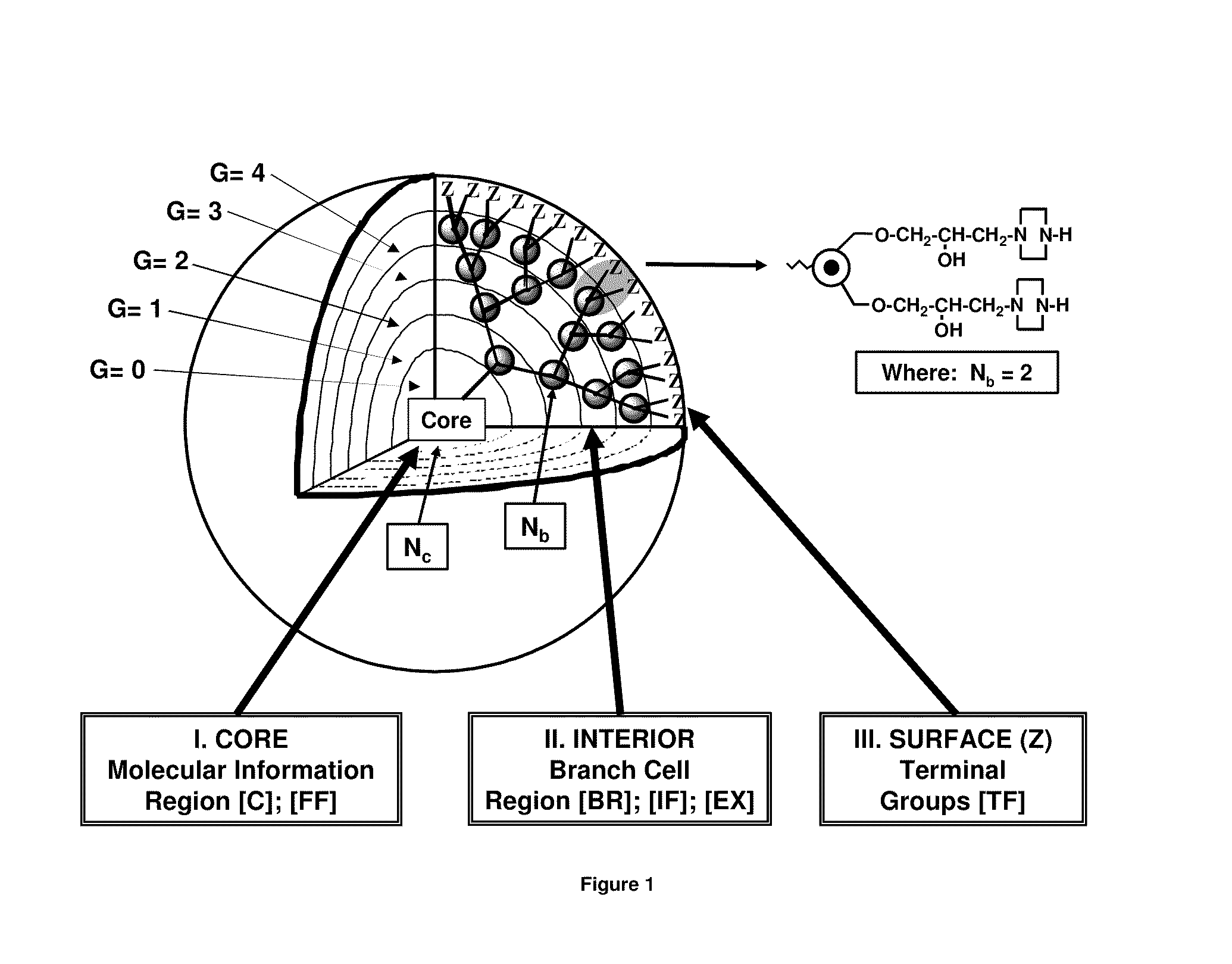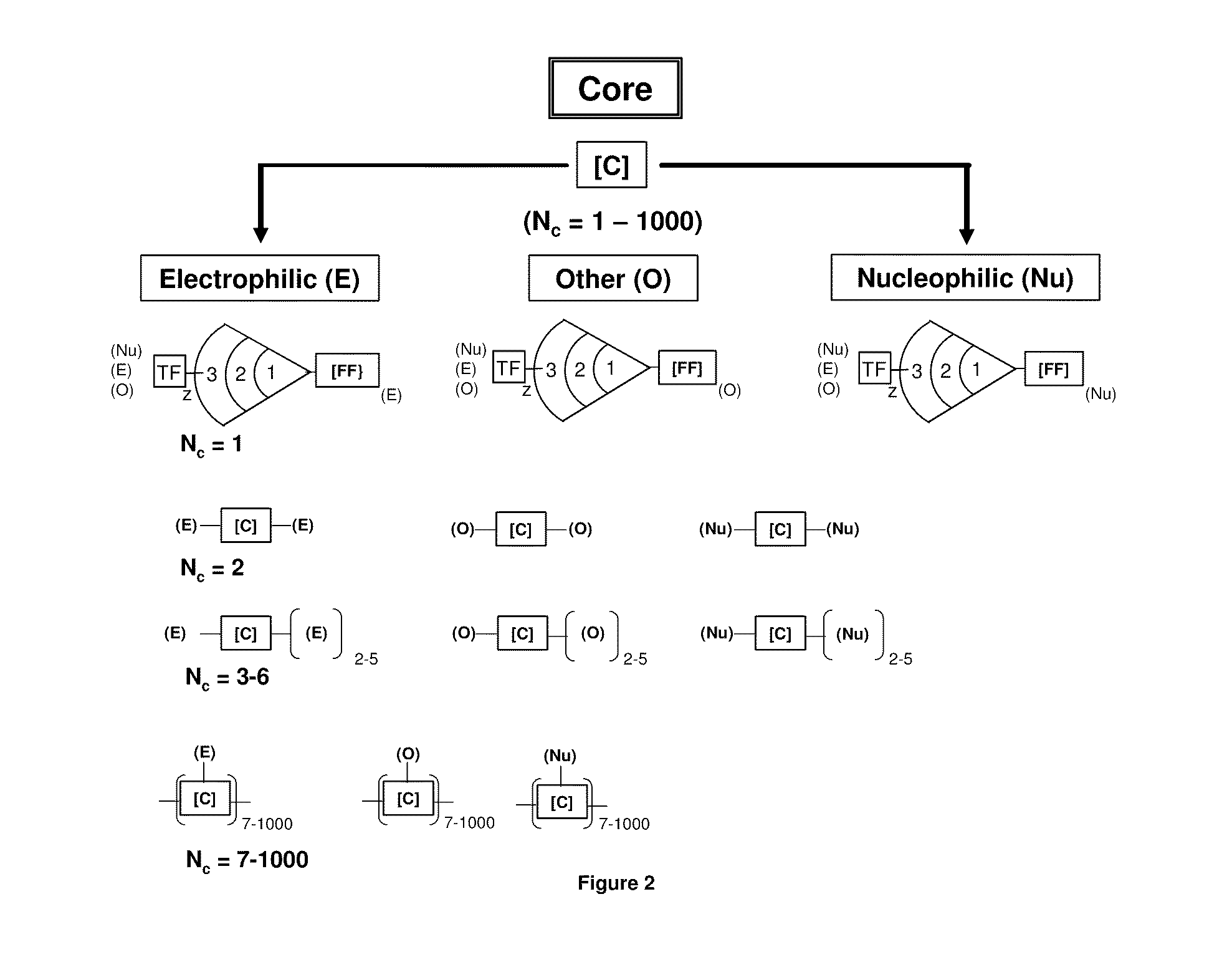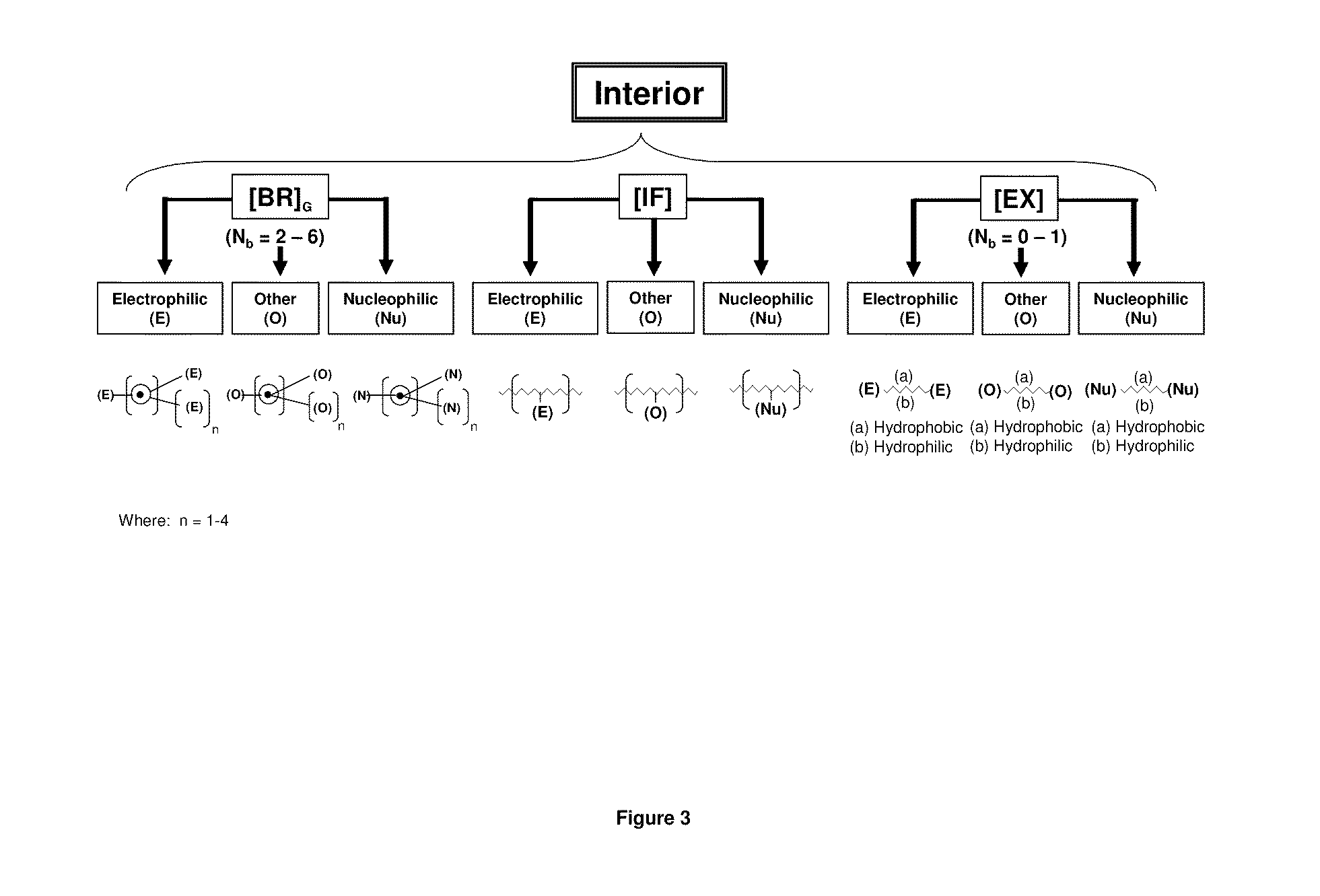Dendritic polymers with enhanced amplification and interior functionality
a technology of dendrite polymer and amplification, applied in the field of dendrite polymer, can solve the problems of inability to synthesis dendrite, low capacity, and inability to use ring opening polymerization in the synthesis of highly branched polymers, and achieve the effects of reducing reactivity, minimizing steric effect, and relative size of alkyl groups
- Summary
- Abstract
- Description
- Claims
- Application Information
AI Technical Summary
Benefits of technology
Problems solved by technology
Method used
Image
Examples
example a
Preparation of Pentaerythritol Tetraglycidyl Ether from Pentaerythritol and Epichlorohydrin (EPI)
[0266][(C)=PETGE]
[0267]To a 100 mL round bottom flask containing a large stir bar was added 4.1 g of pentaerythritol (30.1 mmols, 120 mmols OH) (Aldrich) and 30 mL of a mixture of DMSO (15.85 g) and KOH (13.47 g), (240 mmol, 2 equivalents per OH). To this rapidly stirred mixture in a water bath at RT was added dropwise (about 1 drop per 10-15 sec) epichlorohydrin (34 g, 367 mmols, 3 equivalents per OH) (Aldrich) over 60 to 90 mins. The temperature was monitored every 10 mins. to maintain the temperature below 35° C. After another hour the exotherm had subsided and the mixture was heated to 35° C. for 5-6 hours. The reaction was monitored by TLC using toluene-acetone (7:3). Spots were visualized from KMnO4 stain. Aliquots were added to the ether-brine mixture to remove DMSO and the ether layer dried with Na2SO4. The TLC of the reaction mixture showed 5 spots after the addition was complet...
example b
Synthesis of Pentaerythritol Tetraglycidyl Ether from Pentaerythritol and Epichlorohydrin (EPI)
[0271][(C)=PETGE]
[0272]This process was performed according to Mitsuo et al., Synthesis, 487 (1993) and is illustrated by the Scheme A below:
[0273]
[0274]Pentaerythritol I (113.6 g, 400 mmol, OH mmol) and DMSO (100 mL) were taken in a 1 L 3-necked round bottom flask and then added 52.7 g of KOH (800 mmol, 2 equivalents per OH) all at once. The reaction mixture was stirred vigorously with a mechanical stirrer and cooled to 15-20° C. with an ice bath. Epichlorohydrin II (1110.4 g or 93.55 mL, 1.2 mol. 3 equivalents per OH) in a pressure-equalizing funnel was added dropwise over a period of 150 min. The temperature was maintained at 15-20° C. during the addition of epichlorohydrin. The color of the reaction mixture turned from colorless to pale yellow. After completing the addition, reaction mixture was allowed to warn to RT and stirring continued overnight. Progress of the reaction was monito...
example c
Tetra(episulfide) from PETGE: Making the Episulfide Branched Cell
[0276][(C)=Tetrathiorane; (TF)=Thiorane]
[0277]An oven dried, 100 mL single necked round bottom flask was charged with PETGE 1 (1.8 g, 5 mmol) and dry acetonitrile (40 mL) added. Thiourea (3.04 g, 40 mmol) was added to the above reaction mixture all at once followed by LiBF4 (0.372 g). The flask was arranged with a refluxing condenser and heated at 60° C. After being heated for 5 hours, TLC indicated traces of PETGE 1 and two other new spots on the top. Heating was continued overnight under N2. The reaction mixture was then quenched with 50 mL water and extracted with CHCl3 (3×50 mL). Combined extracts were washed with brine (2×30 mL), dried over Na2SO4, and concentrated on a rotary evaporator to give a liquid. The crude reaction mixture was purified through column chromatography using silica gel with hexanes:ethyl acetate:chloroform (1:2:2), which gave 0.610 g (29% yield) of pure tetra(episulfide) as a colorless liquid...
PUM
| Property | Measurement | Unit |
|---|---|---|
| polydispersities | aaaaa | aaaaa |
| polydispersity | aaaaa | aaaaa |
| polydispersities | aaaaa | aaaaa |
Abstract
Description
Claims
Application Information
 Login to View More
Login to View More - R&D
- Intellectual Property
- Life Sciences
- Materials
- Tech Scout
- Unparalleled Data Quality
- Higher Quality Content
- 60% Fewer Hallucinations
Browse by: Latest US Patents, China's latest patents, Technical Efficacy Thesaurus, Application Domain, Technology Topic, Popular Technical Reports.
© 2025 PatSnap. All rights reserved.Legal|Privacy policy|Modern Slavery Act Transparency Statement|Sitemap|About US| Contact US: help@patsnap.com



